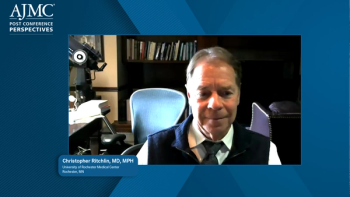
Valuation Challenges and Ethical Implications of Cures
As new treatments come to market that have a substantial impact on diseases, or even cure them, the healthcare system is facing the challenge of how to value these treatments. A panel of experts highlighted what evidence there needs to be, methods of valuing therapies, and the ethical implications of having cures.
This page contains sponsored advertising.
As new treatments come to market that have a substantial impact on diseases or even cure them, the healthcare system is facing the challenge of how to value these treatments. A panel at the International Society of Pharmacoeconomics Outcomes Research 23rd Annual International Meeting, held in Baltimore, Maryland, highlighted what evidence there needs to be, methods of valuing therapies, and the ethical implications of having cures.
At the start of the panel, John Watkins, PharmD, MPH, pharmacy manager, Formulary Development, Premera Blue Cross, highlighted the questions payers have regarding cures with high prices, such as what is the evidence, is it really a cure, is the effect durable for a lifetime, and can the price be justified?
The evidence will be dependent on the population available, he said. There will never be a large randomized controlled trial for an ultrarare disease. In addition, whether or not the treatment is truly a cure needs to be clear. Can the patient go on to live a normal life? For instance, can a child who is cured of hemophilia A go on to play football like any other child?
One of the biggest challenges is knowing whether the effect is durable for a lifetime since all follow-up has been for a fairly short period of a few years, so far. Which means payers have to extrapolate those results for a lifetime.
“We’re still looking for the invention of the time machine so that I can go forward to a 50-year horizon and observe what happens to the person…” Watkins said.
In addition, the definition of value has become overcomplicated, stated Mark Sculpher, PhD, professor of Health Economics, Centre for Health Economics, University of York. There is the value of hope and the value of assurance, but, in his opinion, there are no technical answers to those things. They can be determined differently in different health systems.
He also discussed one way of paying for these expensive treatments through a smoothing of costs over time. Instead of having a large cost upfront, there would be loans from the government or mortgages for manufacturers to smooth the short-term costs for future health gains.
“We’re going have profound evidential uncertainty when we’re making initial decisions about funding: ie, at the launch of these products,” said Sculpher. “What we’ve seen over the last 5, 10 years is the evolution of quite nuanced policy responses to that.”
As an example, Steven D. Pearson, MD, MSc, founder and president of the Institute for Clinical and Economic Review (ICER), took a look at emicizumab. While it’s not a cure, it’s a treatment for hemophilia A. While emicizumab is an expensive drug, it produces cost savings because it is compared with the huge costs currently associated with treating hemophilia.
The weekly costs for these patients can run north of $10,000 when the patient gets into his or her 20s, 30s, and 40s. The health system will spend close to $100 million on these patients in a lifetime.
Pearson asked what would be a value-based price (VBP) for emicizumab? Would it be the $70 million saved over the 70 years of a patient’s life? Which would likely make the treatment cost $1 million a year. But what if it was a 1-time cure? Would the upfront price be $70 million?
He added that the challenges of evaluating the cost of a cure is something ICER has to grapple with when it updates its methods in a year and a half.
“I feel like we’re not close to knowing how to evaluate a cure,” Pearson said. However, in just a few years there could be cures for hemophilia, sickle cell disease, and other illnesses. “We’ll have to say what a value-based price is.”
It can be difficult to evaluate a cure because there are a number of ways to go about it. A standard cost-effectiveness analysis looking at a cure of a fatal disease in a 5-year-old child who would die in 10 years with the standard treatment (cost of $200,000) might find the VBP is $20 million, he explained. If there was a price cap, the VBP might be $10 million. With shared savings of 50%, the VBP might be $15 million.
This is a problem that isn’t just in the future. Pearson acknowledged that ICER was criticized with how it looked at chimeric antigen receptor T-cell treatments.
“We’re heading into a fantastic new era for treatments for which we need to be better prepared to have another difficult societal discussion about what’s value…” he said.
Finally, ethicist Carleigh B. Krubiner, PhD, research scholar and project director at the Berman Institute of Bioethics at Johns Hopkins University, highlighted the medical and nonmedical questions, concerns, and opportunities that cures raise.
For instance, she explained cures could help promote equity among patients suffering from the same illness. Not having a cure could exacerbate health and equity as low-income individuals are burdened more by the costs of needing ongoing care. She explained that covering cures could avoid structural/social determinants of health that lead to disparate access and outcomes.
Cures also have ethical impacts for the fear of contagion, which is not just the issue of preventing the spread of infectious diseases, but the impacts on individuals and their social relationships, which may, in turn, be influenced by their disease status. Having a cure may reduce stigma and forms of discrimination for patients living with communicable diseases.
There is also the value of hope, which can be tricky to evaluate and understand. She clarified that hope shouldn’t be false hope—evidence is really important. Severely ill patients may be willing to accept certain trade-offs or greater risk for the chance to get a cure.
She also discussed other morally relevant dimensions of value, such as identity, self-respect, and sense of self-worth associated with the disease, and the ability to develop a plan for the future independent of their disease state.
Newsletter
Stay ahead of policy, cost, and value—subscribe to AJMC for expert insights at the intersection of clinical care and health economics.








































